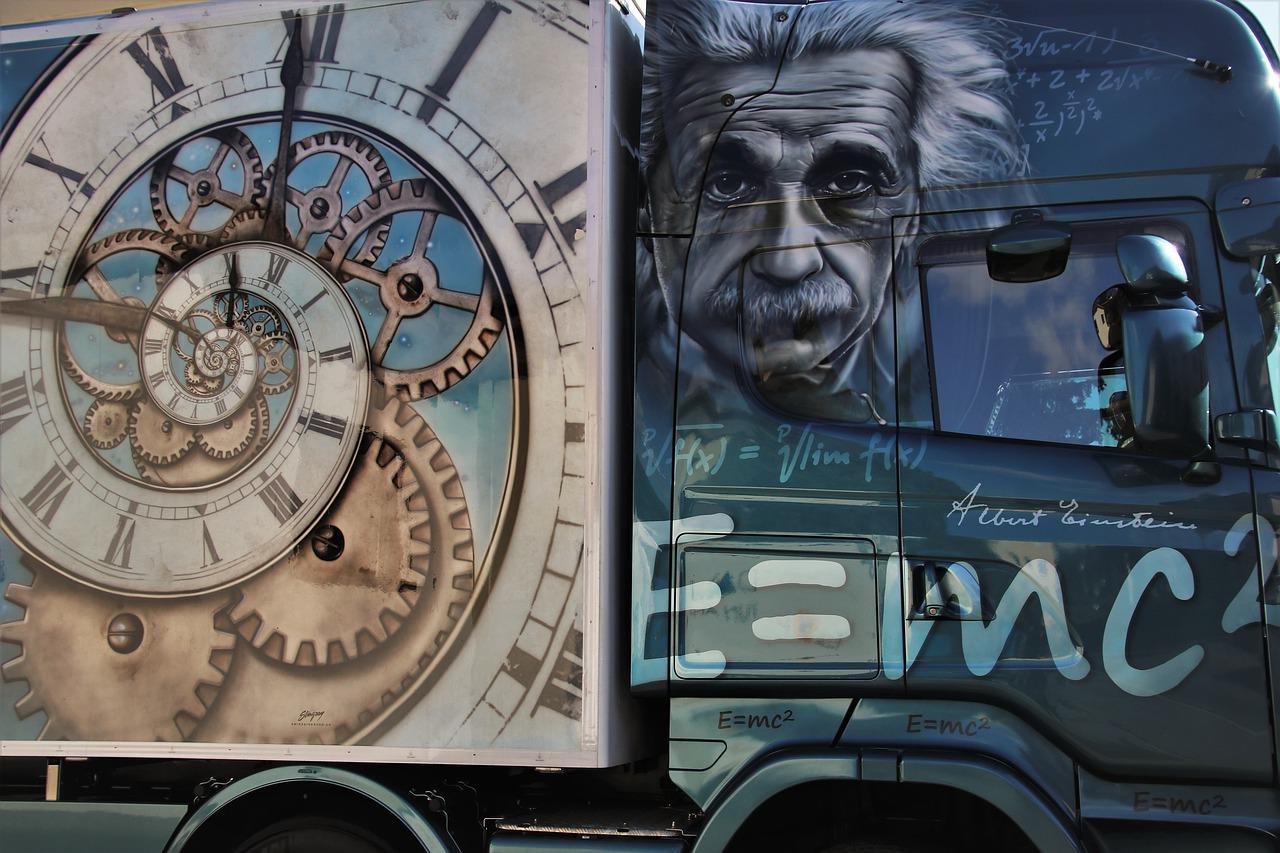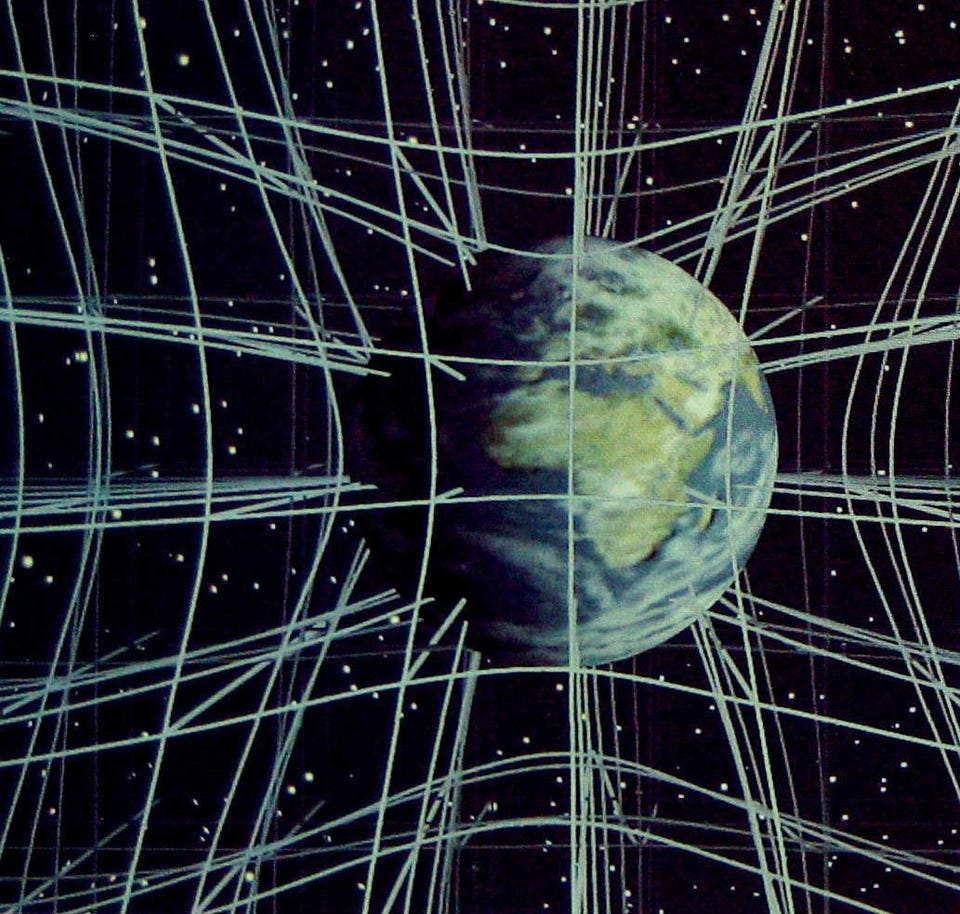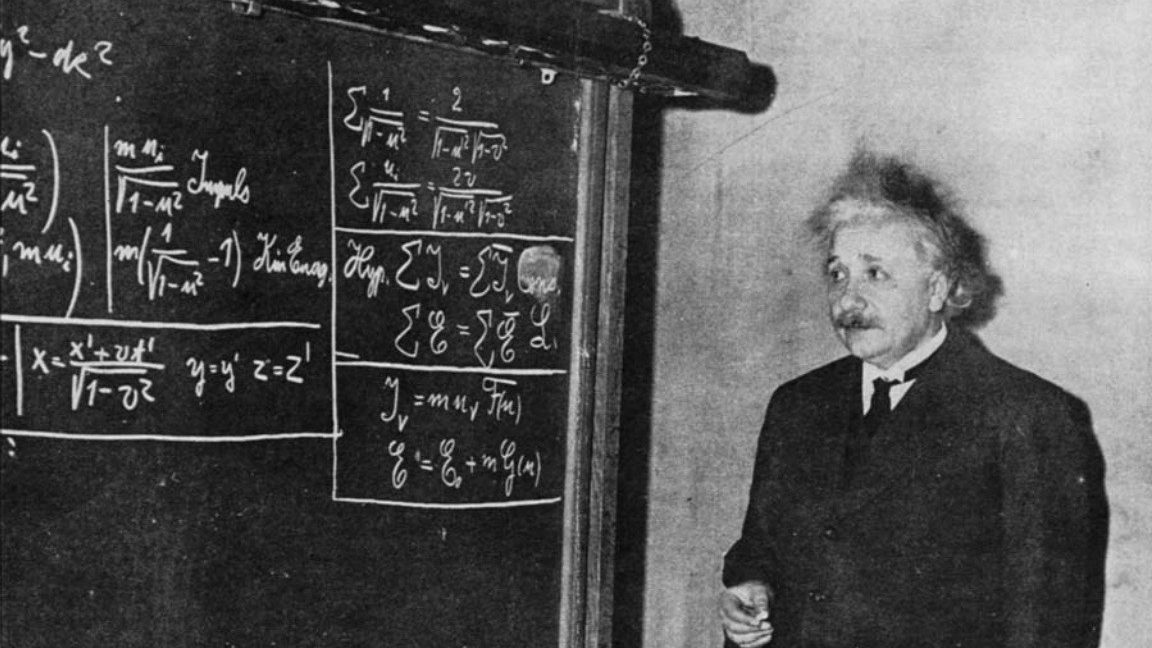How Einstein made the biggest blunder of his life

- Einstein’s General Relativity, upon its publication in 1915, put forth the relationship between matter-energy, which curves spacetime, and curved spacetime, which tells matter-energy how to move.
- However, Einstein also included, in his equations, an additional, unnecessary term: a cosmological constant term, with a constant, non-zero energy density that persists everywhere.
- Some 15+ years after introducing it, Einstein allegedly referred to it as “his greatest/biggest blunder.” Here’s how even the greatest genius of our time was led astray by his own biases.
Imagine what it must have been like to study the Universe, at a fundamental level, way back in the early 1900s. For over 200 years, the physics of Newton appeared to govern how objects moved, with Newton’s law of universal gravitation and laws of motion dictating how things moved on Earth, in our Solar System, and in the greater Universe. Recently, however, a few challenges to Newton’s picture had emerged. You couldn’t keep accelerating objects to arbitrary speeds, but rather everything was limited by the speed of light. Newton’s optics didn’t describe light nearly as well as Maxwell’s electromagnetism did, and quantum physics — still in its infancy — was posing new sets of questions to physicists worldwide.
But perhaps the biggest problem was posed by the orbit of Mercury, precisely measured since the late 1500s and in defiance of Newton’s predictions. It was his quest to explain that observation that led Albert Einstein to formulate the General Theory of Relativity, which replaced Newton’s law of gravitation with a relationship between matter-and-energy, which curves spacetime, and that curved spacetime, which tells matter-and-energy how to move.
Yet Einstein didn’t publish that version of General Relativity; he published a version that included an extra ad hoc term: a cosmological constant, artificially adding an extra field to the Universe. Decades later, he would refer to it as his biggest blunder, but not before doubling down on it many times over the years. Here’s how the smartest man in history made his biggest blunder ever, with lessons for us all.

General Relativity, importantly, was built off of three puzzle pieces that came together in Einstein’s mind.
- Special relativity, or the notion that each unique observer had their own unique — but mutually consistent between observers — conception of space and time, including the distance between objects and the duration and order of events.
- Minkowski’s reformulation of space and time as a unified four-dimensional fabric known as spacetime, which provides a backdrop for all other objects and observers to move and evolve through it.
- And the equivalence principle, which Einstein repeatedly called his “happiest thought,” which was the notion that an observer within a sealed room who was accelerating because they were in a gravitational field would feel no difference from an identical observer in an identical room who was accelerating because there was thrust (or an outside force) causing the acceleration.
These three notions, put together, led Einstein to conceive of gravity differently: that instead of being governed by an invisible, infinitely fast-acting force that acted across all distances and at all times, gravitation was instead caused by the curvature of spacetime, which itself was induced by the presence of matter-and-energy within it.
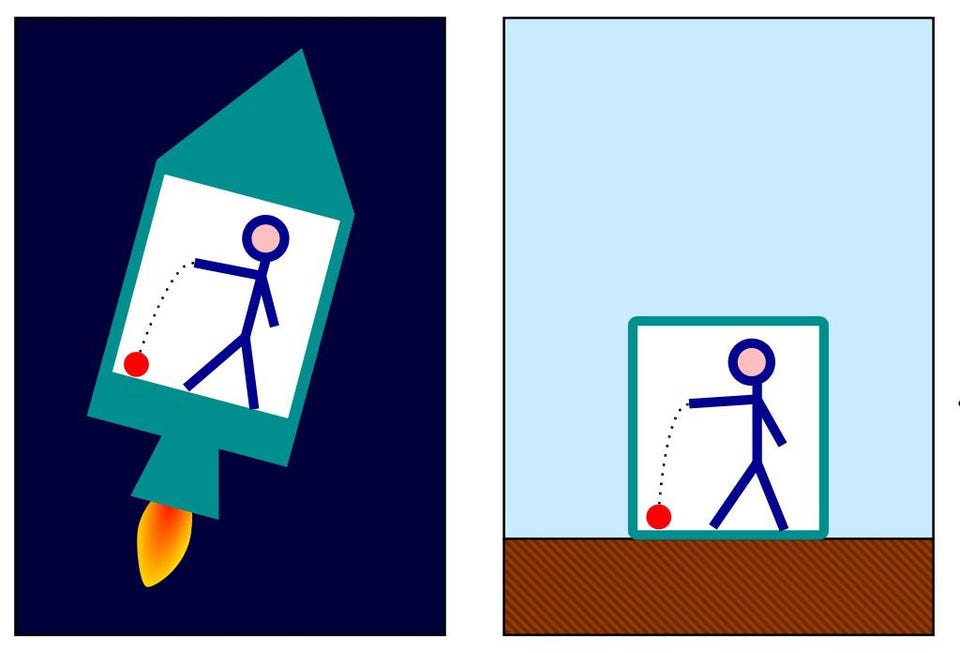
Those three early steps happened in 1905, 1907, and 1908, respectively, but General Relativity wasn’t published in its final form until 1915; that’s how long it took Einstein and his collaborators to work the details out correctly. Once he had, however, he released a set of equations — known today as the Einstein field equations — that related how matter-energy and spacetime affected one another. In that paper, he verified that:
- At large distances from relatively small masses, his equations could be well approximated by Newtonian gravity.
- At small distances from large masses, there were additional effects beyond the Newtonian approximation, and those effects could, at last, explain the tiny-but-significant differences between what astronomers had been observing for hundreds of years and what Newton’s gravity had predicted.
- And that there would be additional, subtle differences between the predictions of Einstein’s gravity and Newton’s gravity that could be searched for, including gravitational redshift and the gravitational deflection of light by masses.
That third point led to a key new prediction: that during a total solar eclipse, when the Sun’s light was blocked by the Moon and stars would be visible, that the apparent position of the stars located behind the Sun would be bent, or shifted, by the Sun’s gravity. After “missing” the chance to test this in 1916 because of the Great War and losing out to clouds in 1918, the eclipse expedition of 1919 finally made the critical observations, confirming the predictions of Einstein’s General Relativity and leading to its widespread acceptance as a new theory of gravity.

But, like any good scientist formulating a new theory, Einstein himself was fairly uncertain of how the experiments and observations would turn out. In a letter to physicist Willem de Sitter in 1917, Einstein wrote the following:
“For me… it was a burning question whether the relativity concept can be followed through to the finish, or whether it leads to contradictions.”
In other words, sure, after figuring out the mathematics of General Relativity and how to successfully apply it to a variety of situations, now the big challenge arrives: applying it to every physical case where it should give a correct description. One big challenge to that, however, was when it came to the known Universe of Einstein’s time.
You see, back then, it was not yet known whether there were other galaxies out there — what astronomers of the time dubbed the “island universe” hypothesis — or whether everything that we observed was contained within the Milky Way itself. There was even a great debate on this very topic a few years later, in 1920, and although both sides argued passionately, it was highly inconclusive. It was reasonable, and accepted by many, that the Milky Way and the objects within it were simply all there was.

This notion posed a big problem for Einstein. You see, one of the theorems that was relatively easy to derive in relativity is as follows:
If you take any initial distribution of masses, and start them off at rest, what you’ll inevitably find, after a finite amount of time has passed, is that these masses will eventually collapse down to a single point, what we know today as a black hole.
This would be bad, because a black hole is a singularity, where space and time come to an end and no sensible physical predictions can be arrived at. This brought up precisely the type of contradiction that Einstein was worried about. If our Milky Way was simply a large collection of masses that all moved very slowly relative to one another, those masses should inevitably cause the spacetime they were present in to collapse. And yet, our Milky Way didn’t appear to be collapsing and clearly hadn’t collapsed in on itself. In order to avoid this type of contradiction, Einstein posited that something extra — some new ingredient or effect — must be added to the equation. Otherwise, the unacceptable consequence of an unstable Universe that should be collapsing (yet, observationally, didn’t appear to be) couldn’t be evaded.

In other words, if the Universe is static, it can’t just collapse; that would be really bad and would conflict with what we were seeing. So how did Einstein avoid it? He introduced a new term to the equations: what is known today as a cosmological constant. In his own words, again writing in 1917, Einstein stated the following:
“In order to arrive at this consistent view, we admittedly had to introduce an extension of the field equations of gravitation which is not justified by our actual knowledge of gravitation… That term is necessary only for the purpose of making possible a quasi-static distribution of matter, as required by the fact of the small velocities of the stars.”
It’s pretty harsh to call this a blunder, as his line of thought is easy to follow and seems reasonable. We know that:
- a static universe filled with masses in some distribution is unstable and will collapse,
- our Universe appears to be filled with nearly-static masses but isn’t collapsing,
- and therefore, there has to be something else out there to hold it up against collapse.
The only option that Einstein had found was this extra term that he could add without introducing further pathologies in his theory: a cosmological constant term.
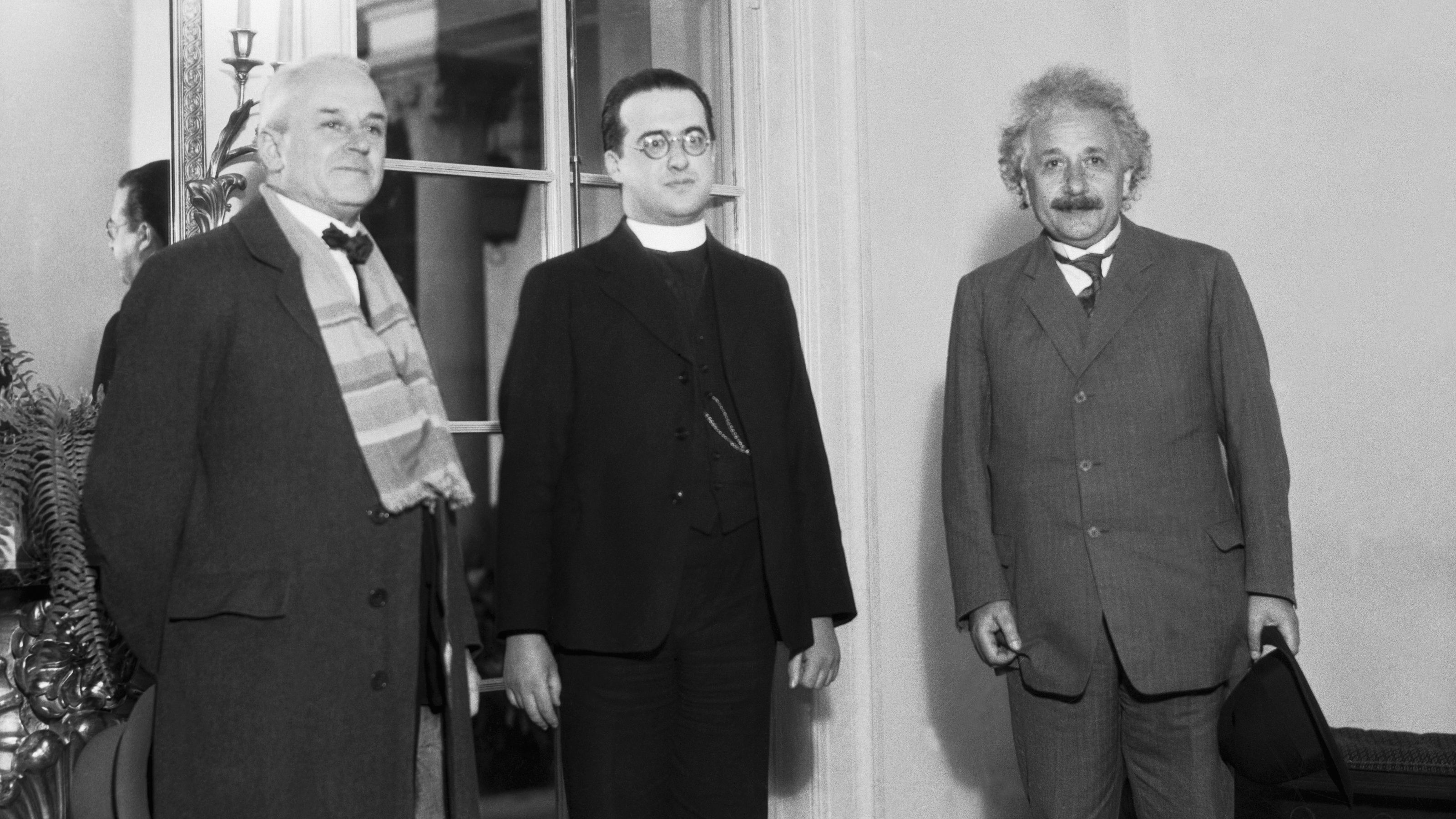
Other people — I should be clear here that these are other very smart, very competent people — took these equations and concepts put forth by Einstein, and went on to derive the inevitable consequences of them.
First, Willem de Sitter, later in 1917, showed that if you take a model Universe with only a cosmological constant in it (that is, with no other sources of matter or energy), you get an empty, four-dimensional spacetime that expands eternally at a constant rate.
Second, in 1922, Alexander Friedmann showed that if you make the assumption, within Einstein’s relativity, that the entire Universe is uniformly filled with some type of energy — including (but not limited to) matter, radiation, or the type of energy that would yield a cosmological constant — then a static solution is impossible, and the Universe must either expand or contract. (And that this is true regardless of whether the cosmological constant exists or not.)
And third, in 1927, Georges Lemaître built on Friedmann’s equations, applying them to the combination of galactic distances measured by Hubble (starting in 1923) and also to the apparently large recessional motion of those galaxies, measured earlier by Vesto Slipher (as early as 1911). He concluded that the Universe is expanding, and not only submitted a paper on it, but wrote to Einstein about it personally as well.
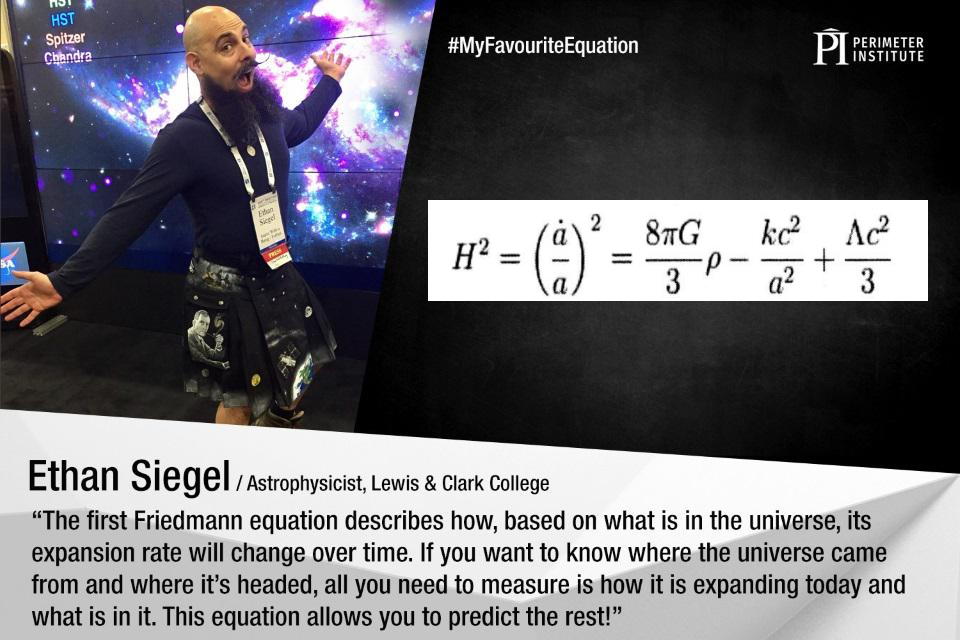
The reason that the cosmological constant is often called “Einstein’s greatest blunder” isn’t because of why he originally formulated it; it’s because of his undeserved, unreasonable, and perhaps even unhinged reaction to everyone else’s valid criticisms and contrary conclusions. Einstein extensively, and incorrectly, criticized de Sitter’s derivations, being proved wrong on all counts by de Sitter and Oskar Klein in a series of letters throughout 1917 and 1918. Einstein incorrectly criticized Friedmann’s work in 1922, calling it incompatible with the field equations; Friedmann correctly pointed out Einstein’s error, which Einstein ignored until his friend, Yuri Krutkov, explained it to him, at which point he retracted his objections.
And still, in 1927, when Einstein became aware of Lemaître’s work, he retorted, “Vos calculs sont corrects, mais votre physique est abominable,” which translates to, “Your calculations are correct, but your physics is abominable.” He maintained this stance in 1928, when Howard Robertson independently reached the same conclusions as Lemaître with improved data, and did not change his mind with Hubble’s (and, later, Humason’s) overwhelming demonstration that more distant objects (with distances determined using Henrietta Leavitt’s legendary method) were moving away more quickly in 1929. Hubble wrote that the finding could “represent the de Sitter effect” and “hence introduces the element of time” into the Universe.

Throughout all of this, Einstein didn’t change his stance at all. He maintained that the Universe must be static and the cosmological constant is mandatory. And, because he was Einstein, many people — including Hubble — were tentative to interpret this data as implicating the expansion of the Universe. It wouldn’t be until 1931, when Lemaître wrote a very influential letter to Nature, where he put together the pieces completely: that the Universe could be evolving in time if it started out from a smaller, denser state and has expanded ever since. It was only in the aftermath of that, that Einstein finally admitted that, just perhaps, he had jumped the gun by introducing a cosmological constant with the sole motive of keeping the Universe static.
In hindsight, the cosmological constant is now a very important part of modern cosmology, as it’s the best explanation we have for the effects of dark energy on our expanding Universe. But if Einstein didn’t introduce it and continue to defend and stand by it the way he had — if he had simply followed the equations — he could have derived the expanding Universe as a consequence of his equations, just as Friedmann did and, later, Lemaître, Robertson, and others.
It was a small blunder to introduce an extraneous, unnecessary term into his equations, but his greatest blunder was defending his error in the face of overwhelming evidence. As we all should learn, saying “I was wrong” when we’re shown to be in error is the only way to grow.
The author acknowledges Dan Scolnic’s plenary talk at the 242nd American Astronomical Society’s meeting for unearthing many of these facts and quotes.

